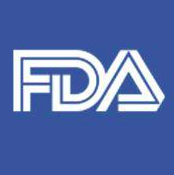Today, U.S. Secretary of Agriculture Sonny Perdue announced a significant step in modernizing regulations of agricultural animals modified or produced by genetic engineering. The U.S. Department of Agriculture (USDA) will be moving forward with an Advanced Notice of Proposed Rulemaking (ANPR) to solicit public input and feedback on a contemplated regulatory framework that would modernize its system into a scientifically-sound, risk-based, and predictable process that facilitates the development and use of these technologies for U.S. farmers and ranchers under USDA’s authorities. This initiative follows President Donald Trump’s Executive Order on agricultural biotechnology that called upon federal agencies to make regulatory improvements to rectify some of the long-standing barriers to innovation for U.S. agriculture.
Background
Last year, President Trump directed federal agencies to modernize the regulatory framework for agricultural biotechnology products by establishing regulatory approaches proportionate to the product’s risks, avoid unjustified distinctions across similar products, and promote future innovation and competitiveness. USDA will publish an ANPR on animal biotechnology as a keystone effort in fulfilling this Executive Order.
This ANPR will transition portions of Food and Drug Administration's (FDA) pre-existing animal biotechnology regulatory oversight to USDA. USDA will consult with FDA to ensure its reviews benefit from FDA’s expertise, while providing developers with a one-stop-shop for their products at USDA. USDA looks forward to FDA experts participating in the development of its review process.
Through this ANPR, USDA is proposing to establish a flexible, forward-looking, risk-proportionate and science-based regulatory framework that provides a predictable pathway to commercialization and keeps pace with advances in science and technology for certain farm animals (cattle, sheep, goats, swine, horses, mules, or other equines, catfish, and poultry) developed using genetic engineering intended for agricultural purposes.
USDA’s proposed safety review would cover molecular characterization, animal health (including noninfectious, infectious, and zoonotic diseases), efficacy (for disease and pest resistance traits), environmental considerations, food safety evaluation of any expressed substance (including allergenicity and compositional analyses of key components), and food storage and processing. USDA’s proposal would provide end-to-end regulatory oversight from pre-market reviews through post-market food safety monitoring of animals. USDA will continue to coordinate closely with the FDA to fulfill oversight responsibilities and provide the appropriate regulatory environment, ensuring the safety of products derived from new technologies, while fostering innovation at the same time.
Under the regulatory framework being contemplated, USDA would provide regulatory oversight from pre-market reviews through post-market food safety monitoring for certain farm animals developed using genetic engineering. USDA would promulgate regulations using the authorities granted to the Department through the Animal Health Protection Act, the Federal Meat Inspection Act, and the Poultry Products Inspection Act. Pursuant to these authorities, the Animal and Plant Health Inspection Service would conduct a safety assessment of organisms developed using genetic engineering that may increase an animal’s susceptibility to pests or diseases of livestock, including zoonotic diseases, or ability to transmit the same. The Food Safety and Inspection Service would conduct a pre-slaughter food safety assessment to ensure that the slaughter and processing of animals developed using genetic engineering would not result in a product that is unsound, unhealthful, unwholesome, or otherwise unfit for human food.



